The new Cannondale SuperSix EVO Disc - First Ride
A new disc brake equipped version of the Cannondale SuperSix Evo has just been launched. Whilst out in Austria we managed take one of the new bikes into the mountains
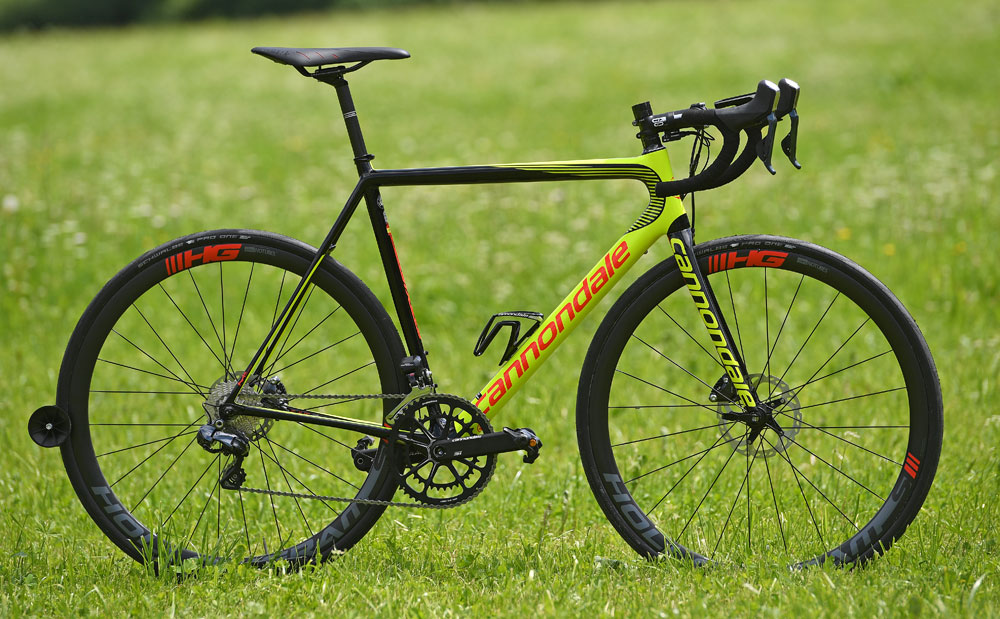
I am huge fan of the Cannondale SuperSix Evo. With skinny tubes, stays and a traditional frame shape, it may buck the current trend of aero bikes, however it is classically good looking and corners like its on rails. The handling characteristics of the current Evo (2016) really are tremendous, it is a joy to ride around corners.
>>> What do pro riders actually think of disc brakes? (video)
It is a tough act to follow and there is always the worry that the structural changes required when equipping the bike with discs will drastically alter the way it feels, rides and handles. According to Cannondale, the aim of the new Cannondale SuperSix EVO Disc was to make a road bike equipped with discs that still retains the quality of ride and handling of the non disc version, while keeping the weight under the UCI limit of 6.8kg.
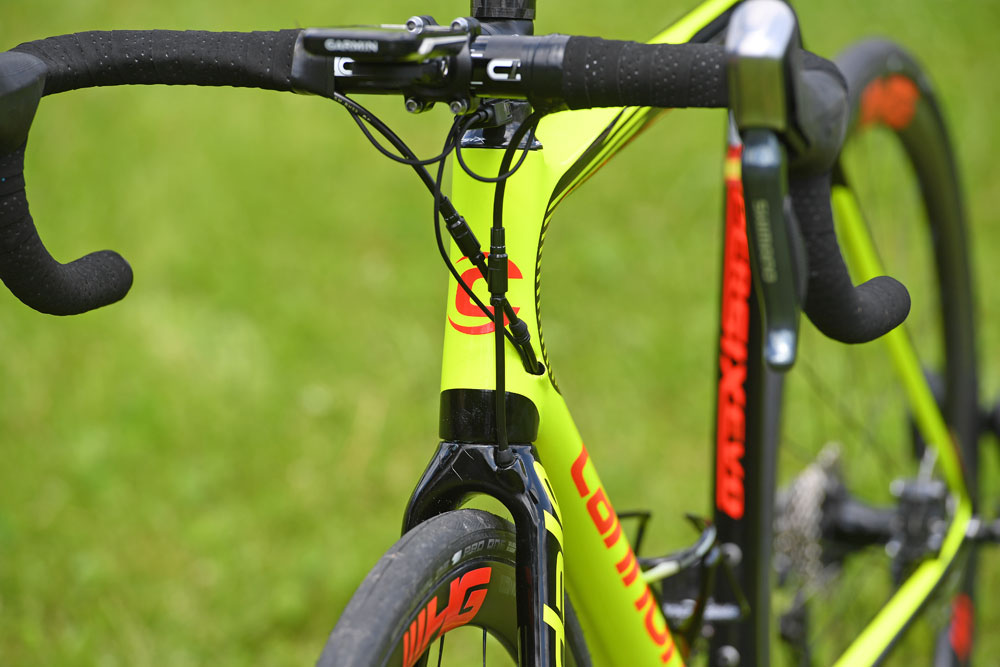
Equipping a road bike with disc brakes is not just a case of bolting them on to an existing design. You could do, but it would result in a bike that was about as stable and certain as the post Brexit markets. A whole new layup is required to cope with the increased and asymmetric braking forces.
>>> Review of the Cannondale Supersix Evo (non disc)
To this end, the new Cannondale SuperSix EVO Disc has utilised completely new moulds throughout - not just a new fork and rear triangle. In essence the frame has been beefed up, resulting in claimed 150g increase in system weight. The result is a claimed weight of 829g for the frame and 360g for the fork (for a 56cm frame).
The low weight is impressive and is right up there (or perhaps down there) with the Focus Izalco Max Disc launched last year. Outwardly the frame looks almost identical to the non-disc version, save for some new paint.
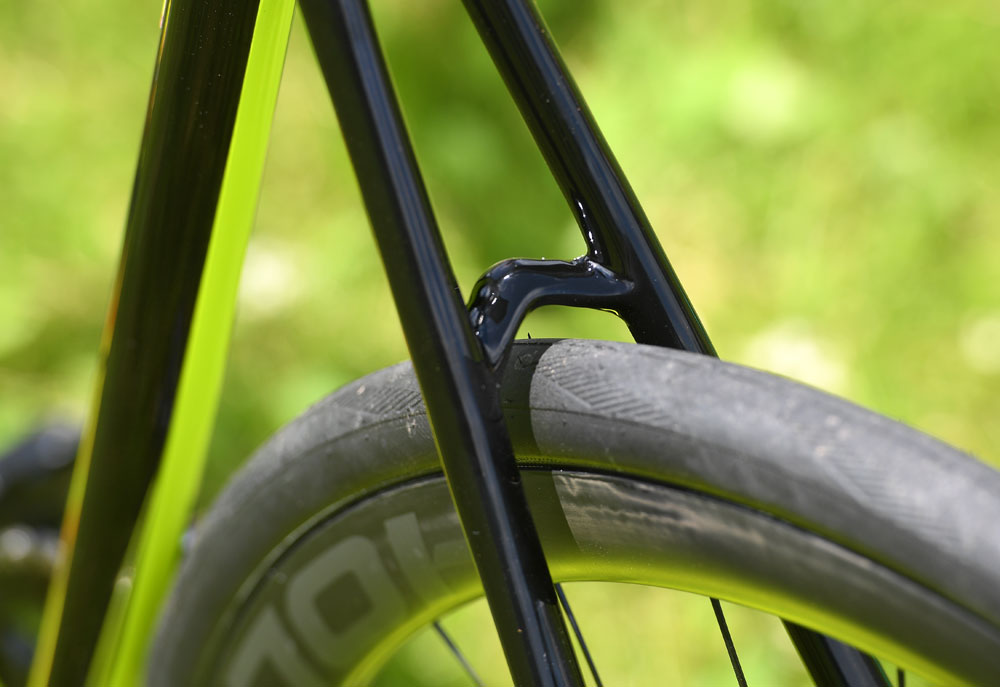
The rear caliper may have gone, but the Cannonade SuperSix EVO Disc retains the rear brake bridge. The bike's designers told me that this was necessary to cope with the torsional strain in the rear triangle, which owing to the traditional (non compact) frame geometry creates a relatively large rear triangle. The cables are routed internally for nice clean look.
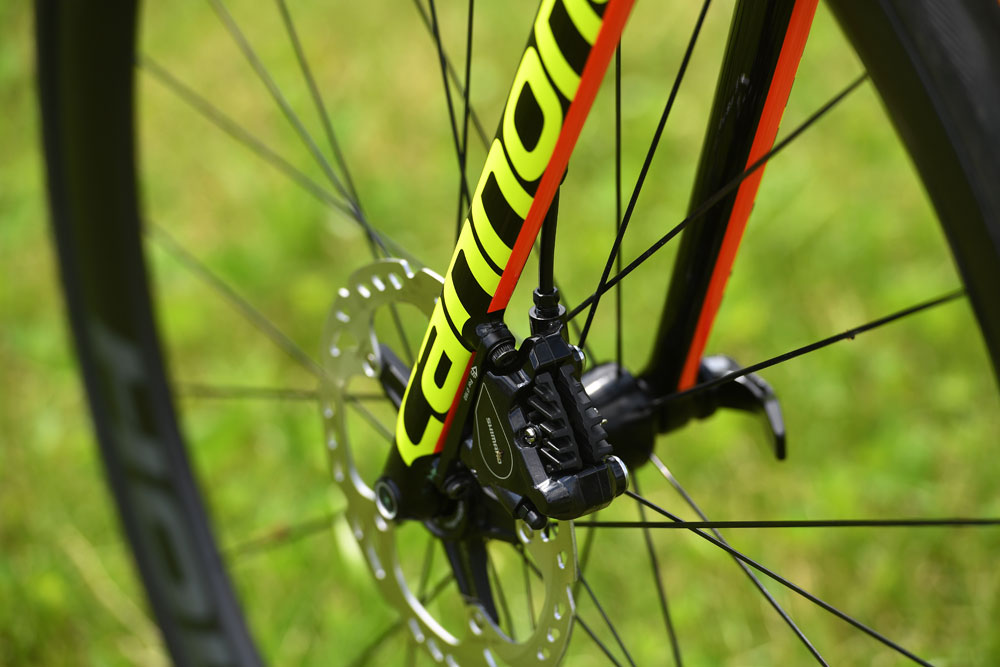
>>> The UCI suspends the use of disc brakes
To help cope with the increased unsymmetrical braking forces and torque steer, in addition to a new carbon layup, there is a 12mm through axel to stiffen up the front end. The rear however features a standard quick release. Cannondale explained that the QR was chosen because it is lighter, provided adequate strength at the rear and afforded quicker rear wheel changes. This is a race bike at its heart.
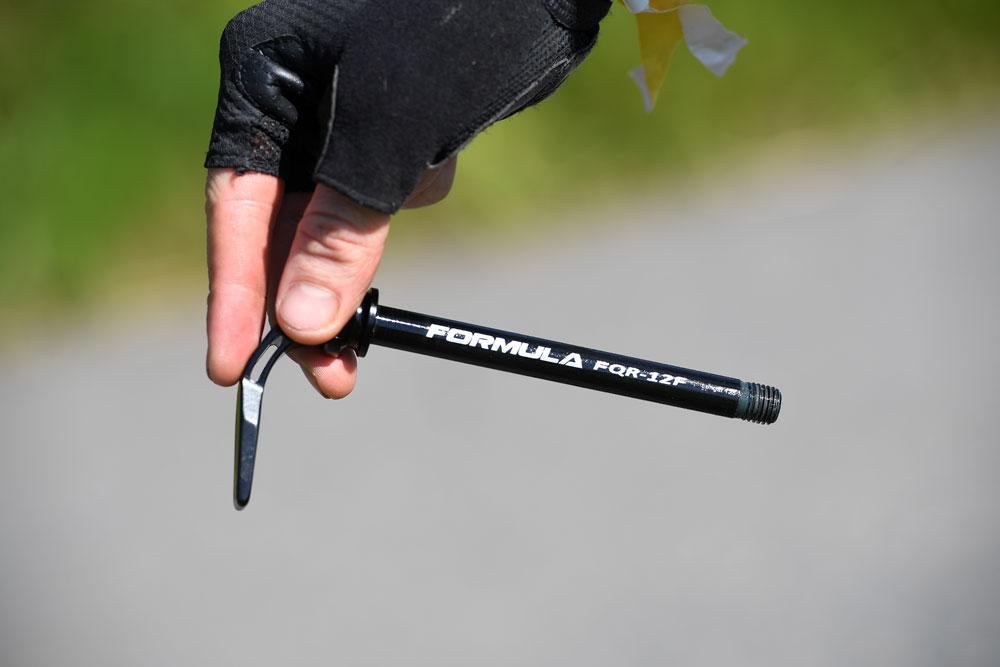
Riding
To put the Cannondale SuperSix EVO Disc to test, I took to the stunning roads around Kitzbuhel, Austria. This included an assault of the infamous Kitzbuheler Horn. For those not familiar, this climb is a fearsome hors catagorie monster, 9.7km in length with a gradient of 13%. This asphalt of unrelenting brutality is often featured in the Tour of Austria.
Our 56cm test model was equipped with Cannondale's proprietary Hollowgram SI crankset and new Hollowgram wheels with a 35-millimeter depth and a 19-millimeter rim width. The groupset was Shimano Ultegra Di2 with hydraulic flat mount disc brakes. The total weight of the bike coming in at roughly 7.8kg. The front disc is 160mm while the rear is 140mm.
>>> I cheated on Strava and took a really awesome KOM
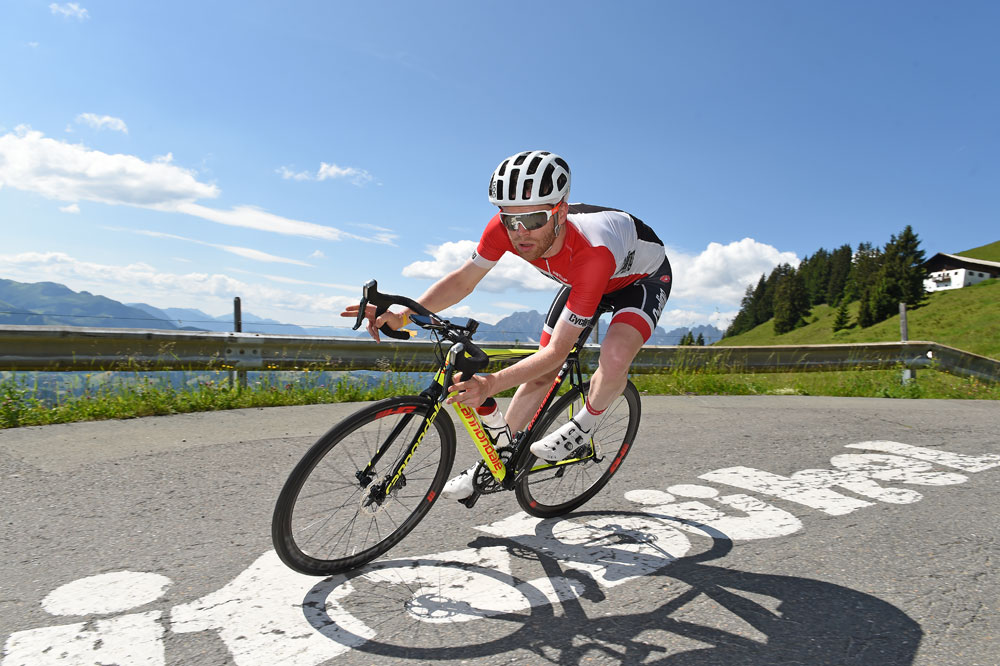
The frame may only be slightly heavier, but the hydraulic levers, brakes and discs add roughly half a kilo of further weight over the non-disc version. There is no escaping this and the bike is noticeably less nimble when darting up sharpe gradients. However the added weight is partially offset by the lower inertia provided by Cannondale's new disc specific carbon wheels. Without a brake track the rims can be lighter. The wheels impressed me, they compliment the bike well, with the wide rim width, increasing the tyre contact patch.
I pushed on up the Horn. It is over 25% in places, with sustained sections around 19%. When grinding out the saddle on quite frankly ludicrous gradients it was absolutely clear that the stiffness of the frame has not been compromised in any way.
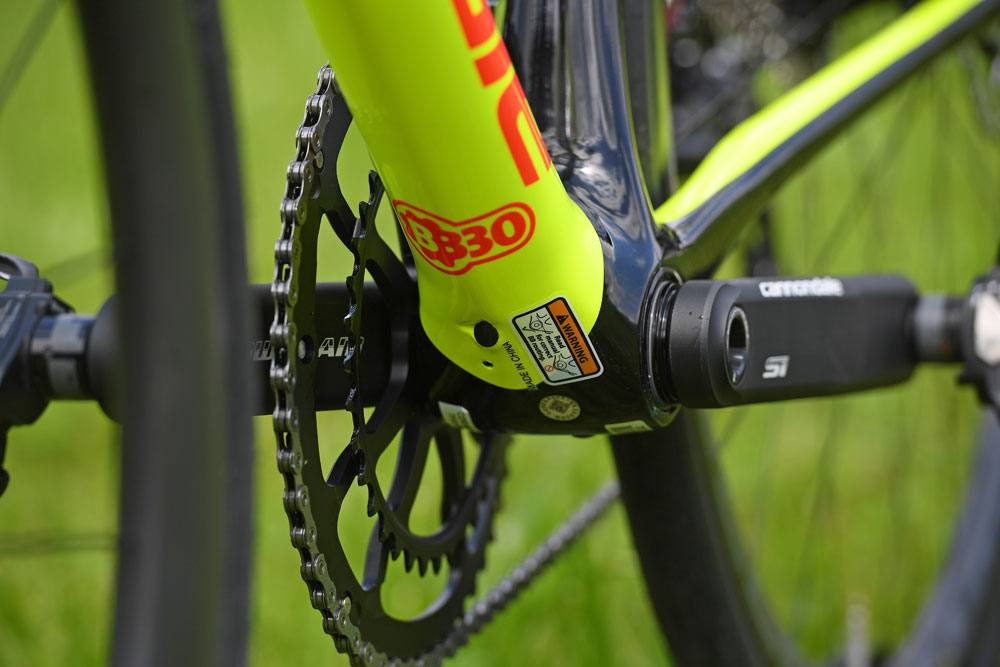
Eventually I made it to the top. The Horn is one way in one way out, so I set about descending the way I had come up. I was immediately comfortable and felt at home, the handling felt familiar. The Kitzbuheler Horn is an ideal testing ground because the steep gradients repeatedly slingshot you into tight hairpin bends. The improved modulation and feel of the discs really does allow you to brake harder and later, making the whole experience more enjoyable.
Video - aerobike vs lightweight bike on a climb
Braking hard through the front brake, the bike felt stable and I didn't detect any shuddering or torque steer. The big question then: is the Cannonade SuperSix EVO Disc, better or worse than the non-disc version?
I am a fan, the engineers have done a great job of retaining the sublime, assured handling of the non disc version. It may not be as nimble when ascending, but it is certainly faster when descending. Although our test bike was significantly over the UCI limit, higher spec models will likely be very close, owing to how light the frame is.
Models
For the UK market, the Cannondale SuperSix Evo Disc will be available in four models. At this stage UK pricing is still to be confirmed but in the mean time you can visit www.cannondale.com

Thank you for reading 20 articles this month* Join now for unlimited access
Enjoy your first month for just £1 / $1 / €1
*Read 5 free articles per month without a subscription

Join now for unlimited access
Try first month for just £1 / $1 / €1
Get The Leadout Newsletter
The latest race content, interviews, features, reviews and expert buying guides, direct to your inbox!
Oliver Bridgewood - no, Doctor Oliver Bridgewood - is a PhD Chemist who discovered a love of cycling. He enjoys racing time trials, hill climbs, road races and criteriums. During his time at Cycling Weekly, he worked predominantly within the tech team, also utilising his science background to produce insightful fitness articles, before moving to an entirely video-focused role heading up the Cycling Weekly YouTube channel, where his feature-length documentary 'Project 49' was his crowning glory.
-
 How I got my non-cyclist friend hooked on riding bikes — and how you can, too
How I got my non-cyclist friend hooked on riding bikes — and how you can, tooWith a little bit of gentle guidance, “bikes aren’t my thing” can turn into “when’s our next ride?”
By Marley Blonsky
-
 Madison Flux short sleeve jersey review: functional and affordable
Madison Flux short sleeve jersey review: functional and affordableThe road cycling jersey delivers top performance for a budget-conscious cyclist
By Hannah Bussey